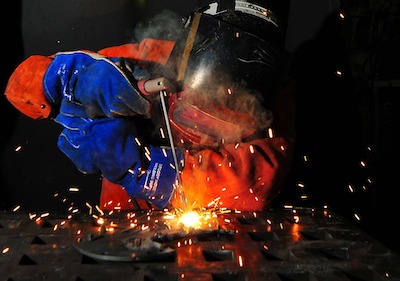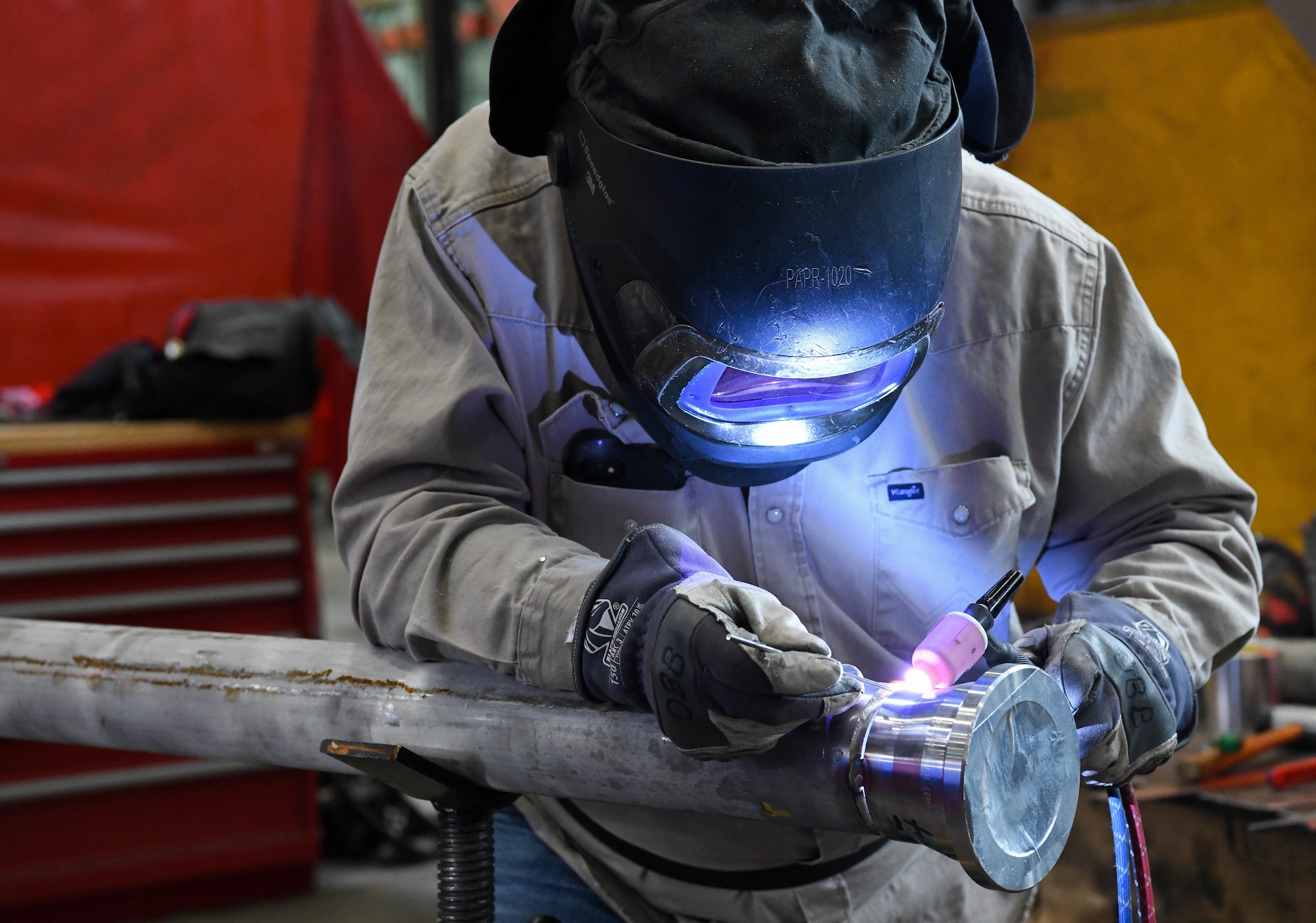Common Welding Fixing Issues and Exactly How to Address Them Successfully
Welding repair services typically run into an array of issues that can threaten the stability of the last product. Typical issues consist of inadequate infiltration, porosity, and misalignment, to name a few. Each problem offers special difficulties that call for certain strategies for resolution. Comprehending these concerns is necessary for welders intending to improve their skills and results. This discussion will check out these typical welding repair work concerns and effective methods to resolve them.
Inadequate Penetration
Poor penetration takes place when the weld metal falls short to fully fuse with the base material, causing weak joints and potential architectural failings. This issue frequently comes from inadequate warmth input, inaccurate electrode angle, or inappropriate welding rate. Welders may run into insufficient infiltration as a result of a mistake of the necessary parameters for a specific material density or kind. Additionally, contamination on the base product's surface area can prevent reliable bonding, aggravating the issue. To attend to insufficient penetration, welders need to ensure proper setups on their equipment and preserve a clean job surface area. Normal inspection of welds is suggested to identify any deficiencies early, permitting prompt corrections and the prevention of endangered structural stability in welded assemblies.
Porosity
Porosity is a common issue in welded joints that shows up as tiny gas bubbles caught within the weld metal. This problem can endanger the integrity of the weld, causing decreased stamina and potential failing under anxiety. Montana Mobile Welding and Repair Welding. Porosity normally occurs from contamination, moisture, or inappropriate welding strategies, which enable gases to escape into the molten weld swimming pool. To attend to porosity, welders should ensure appropriate surface preparation, keep a clean working setting, and utilize ideal welding parameters. In addition, picking the ideal filler material and shielding gas can mitigate gas entrapment. Routine evaluation and screening of welds can aid identify porosity early, assuring prompt rehabilitative actions are taken, consequently maintaining the top quality and dependability of the bonded structure
Imbalance
Imbalance in welding can arise from various variables, including inappropriate arrangement and thermal expansion. Understanding the origin is necessary for reliable resolution. A number of adjustment strategies are available to realign components and ensure architectural stability.
Reasons of Misalignment
Welding imbalance typically comes from a selection of underlying concerns that can endanger architectural integrity. One primary cause is incorrect fit-up of components prior to welding, which can bring about voids and irregular surfaces. Variants in thermal expansion throughout the welding procedure can likewise cause distortion, especially if the products being signed up with have different coefficients of expansion. In addition, poor clamping and fixturing might fall short to hold elements safely in position, resulting in activity throughout welding. Badly conserved tools, including welding devices and devices, may present variances in the weld grain, further adding to imbalance. Driver error, stemming from not enough training or experience, can additionally play a substantial function in producing misaligned welds.

Adjustment Techniques Available
Dealing with imbalance properly calls for a combination of corrective strategies tailored to the specific concerns at hand. One common method is the use of jigs or fixtures to hold components in the proper setting throughout welding, ensuring regular positioning. In addition, preheating the materials can aid lower distortion and enhance fit-up. For significant imbalance, mechanical adjustment techniques, such as making use of hydraulic jacks or clamps, can be employed to deal with the placement prior to welding. Post-weld warm treatment might likewise be required to relieve stress and anxieties triggered by misalignment. Ultimately, mindful inspection and adjustment during the setup stage can stop misalignment concerns from coming to be considerable troubles, advertising a smoother welding process and improving overall structural stability.
Distortion
Distortion is a common obstacle in welding that can occur from different elements, including irregular cooling and heating. Recognizing the root causes of distortion is essential for applying efficient prevention strategies. Resolving this concern not just enhances architectural stability yet additionally boosts the total quality of the weld.
Reasons for Distortion
When based on the intense warmth of welding, products usually go through adjustments that can result in distortion. This phenomenon mainly develops from thermal expansion and tightening during the welding process. As the weld area warms up, the material broadens; upon cooling, it contracts, which can create internal stresses. Furthermore, uneven home heating across a workpiece can intensify these stresses, leading to bending or bending. The kind of product also plays a substantial duty; metals with varying thermal conductivity and coefficients of expansion might respond in a different way, bring about unforeseeable distortions. Moreover, bad joint style and insufficient fixturing can add to imbalance during welding, enhancing the chance of distortion. Comprehending these reasons is important for reliable welding repair work and prevention techniques.
Avoidance Techniques
Reliable avoidance techniques for distortion during welding concentrate on managing warmth input and ensuring proper joint style. Preserving click here now a consistent warmth input assists to minimize thermal development and contraction, which can cause distortion. Using methods such as preheating the work surface can likewise lower the temperature level gradient, promoting consistent heating. In addition, selecting proper joint designs, such as T-joints or lap joints, can enhance stability and reduce anxiety concentrations. Carrying out appropriate fixturing to secure the workpieces in area even more help in keeping alignment during the welding process. Staggered welding series can distribute warm extra evenly, protecting against local distortion. By applying these strategies, welders can substantially decrease the likelihood of distortion and improve the overall quality of their welds.
Fracturing
Fracturing is a common problem encountered in welding repairs, often arising from various factors such as improper air conditioning prices, material selection, or insufficient joint preparation. The occurrence of cracks can considerably jeopardize the integrity of the weld, bring about prospective failings during procedure. To resolve this concern, welders have to initially examine the origin, ensuring that materials are compatible and suitably chosen for the certain application. Additionally, regulating the air conditioning rate during the welding procedure is necessary; quick air conditioning can cause tension and lead to cracking. Correct joint layout and prep work additionally add to decreasing the risk. Executing these methods can enhance weld top quality and sturdiness, ultimately reducing the likelihood of cracking in ended up weldments.

Insufficient Blend
A significant concern in welding repairs is incomplete combination, which happens when the weld steel does not effectively bond with the base product or previous weld passes - Montana Mobile Welding and Repair Fabrication. This problem can bring about weaknesses in the joint, potentially endangering the integrity of the bonded framework. Variables adding to insufficient blend consist of not enough warm input, inappropriate welding method, and contamination of the surfaces being joined. To address this issue properly, welders ought to ensure appropriate pre-weld cleansing and surface prep work, as well as adjust their welding specifications to achieve ample infiltration and combination. Normal examination throughout the welding procedure can also help recognize incomplete fusion early, enabling for prompt corrective steps to boost the general top quality of the weld
Overheating
While welding repairs can improve architectural honesty, overheating presents a considerable obstacle that can bring about product degradation. Too much heat throughout welding can alter the mechanical residential properties of metals, leading to lowered strength, increased brittleness, and warping. This sensation is specifically vital in high-stress applications where structural dependability is paramount. Determining overheating can include visual evaluations for staining or distortion, along with keeping an eye on temperature throughout the welding procedure. To alleviate the threats related to getting too hot, welders must use appropriate methods, such as controlling heat input, readjusting traveling rate, and making use of suitable filler products. Furthermore, implementing pre- and post-weld warmth treatments can help recover material properties and improve the overall high quality of the fixing, making certain long-term efficiency and safety and security.
Often Asked Concerns
What Are the Typical Indications of a Welding Flaw?
How Can I Test My Welds for High quality?
To check welds for high quality, one can use visual inspections, ultrasonic testing, and radiographic methods. Each strategy guarantees structural integrity, determines issues, and verifies adherence to specified criteria, inevitably improving the dependability of the welded joints.
What Safety Preventative Measures Should I Take While Welding?
When welding, one must prioritize security by wearing ideal personal safety equipment, ensuring appropriate ventilation, safeguarding flammable materials away, maintaining a clean workspace, and recognizing environments to stop accidents and injuries.
Can I Repair a Weld Without Renovating the Entire Joint?
Fixing a weld without remodeling the entire joint is feasible, depending on the damages (Montana Mobile Welding and Repair Welding). Techniques such as grinding, including filler material, or using a welding procedure can click over here efficiently attend to specific imperfections while preserving the surrounding structure
What Devices Are Important for Reliable Welding Fixes?
Crucial devices for effective welding repair work include a welding device, wire brush, grinder, protective gear, clamps, and filler materials. Each device plays a crucial function in making certain top quality and safety during the repair work process. Porosity normally develops from contamination, moisture, or inappropriate welding techniques, which enable gases to escape into the liquified weld pool. Inadequately kept tools, consisting of welding makers and tools, might present inconsistencies in the weld grain, further adding to misalignment. When subjected to the intense warm of welding, products usually undertake adjustments that can lead to distortion. Splitting is an usual problem come across in welding repairs, usually resulting from numerous elements such as incorrect cooling rates, material choice, or poor joint prep work. A substantial concern in welding repair work is insufficient combination, which takes place when the weld steel does not sufficiently bond with the base material or previous weld passes.
Comments on “Repairing cracking in welded joints: tips from Montana Mobile Welding and Repair Fabrication”